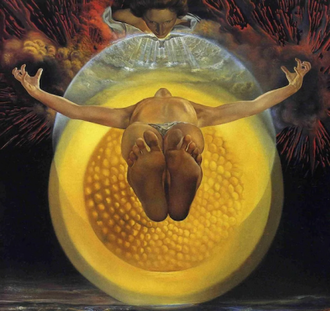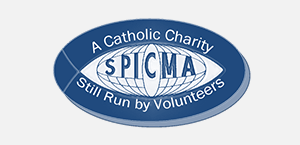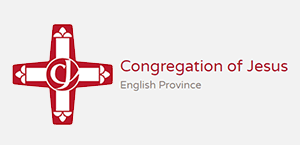Gospel in Art: Now I am going to the one who sent me

The Ascension of Christ, by Salvador Dali, 1958 © Salvador Dali, Private Collection
Source: Christian Art
Gospel of 16 May 2023
John 16:5-11
Jesus said to his disciples:
'Now I am going to the one who sent me. Not one of you has asked, "Where are you going?"
Yet you are sad at heart because I have told you this. Still, I must tell you the truth: it is for your own good that I am going because unless I go, the Advocate will not come to you; but if I do go, I will send him to you. And when he comes, he will show the world how wrong it was, about sin, and about who was in the right, and about judgement: about sin: proved by their refusal to believe in me; about who was in the right: proved by my going to the Father and your seeing me no more; about judgement: proved by the prince of this world being already condemned.'
Reflection on the painting
We are now two days before the Feast of the Ascension of Christ, which commemorates our Christian belief of the bodily Ascension of Christ into Heaven. In today's Gospel we hear Jesus preparing his disciples as to where he might go... back to his Father.
As with all of Dali's paintings, the composition is quite complex, and yet very striking at the same time. The first thing we notice is that looking up to Christ's feet draws our eye inwards and upwards along his body to the dove above, symbolising the Holy Spirit. As with most of Dali's paintings of Christ, his face is not visible. Dali didn't feel worthy of painting Christ's face, a simple but yet beautiful gesture of the artist when he was painting religious subjects. Above Christ is Gala, her eyes wet with tears. Gala was Dali's wife whom he adored and often used to model the figure of Our Lady. The figure of Christ, from his feet in the foreground to his outstretched arms, forms a perfect triangle, the Trinity. The yellowish circle behind Christ is the enlarged structure of an atom. Dali said about this: 'In my dream, which was in vivid colour, I saw the nucleus of an atom, which we see in the background of the painting; this nucleus is the true representation of the unifying spirit of Christ, within all of us.'
In this painting Dali masterfully brings three central Christian themes together:
The Crucifixion: Christ here is shown in Crucifixion pose. His hands are more reminiscent of agony than ecstasy or joy of ascending back to his Father. Christ's hands are almost claw like, reflecting great pain. Also his feet are aligned together as they are on the cross. Furthermore, he is not wearing traditional Ascension clothing, but the loincloth typical of his Passion paintings.
The Resurrection: Look at Christ's hands and feet: no marks of the crucifixion on the resurrected body of Christ. His arms are clean of scars, no pierced hands, no spear mark in his side... Jesus' triumph over death is shown.
The Ascension: the title of the this painting and as explained above, in the composition we see Christ ascending into heaven.
After having been crucified and raised from the dead, he now ascends into heaven.
All three events are subtly brought together in the one painting. 'Now I am going to the One who sent me'.
LINKS
Gospel in Art: https://christian.art/
Today's reflection: https://christian.art/daily-gospel-reading/john-16-5-11-2023/


















